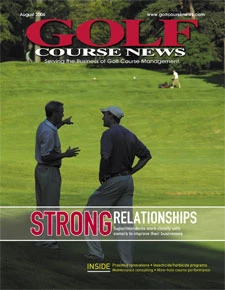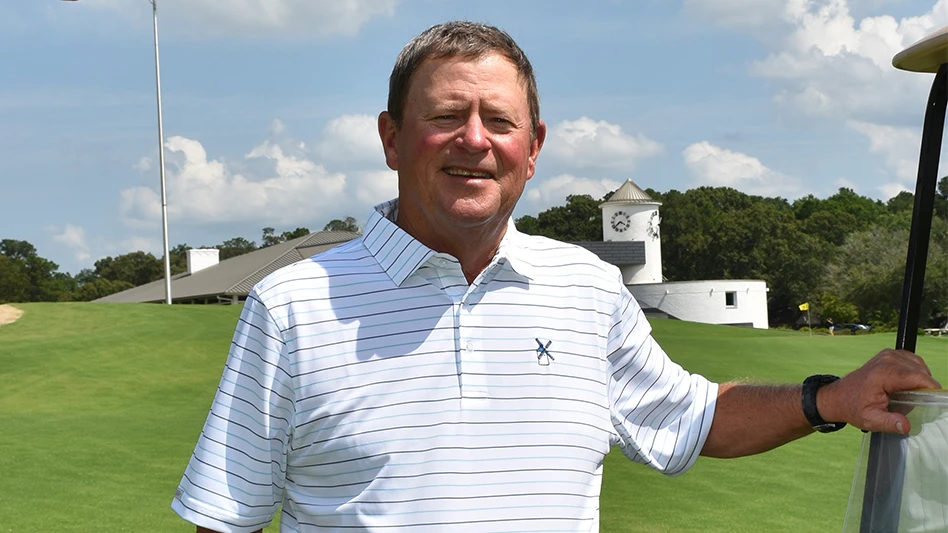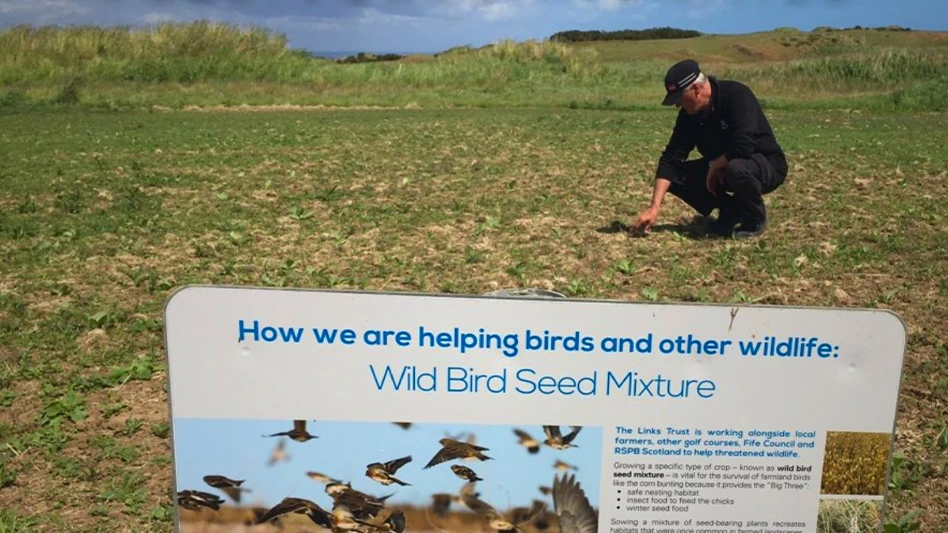Fan stand
The Four Seasons Resort and Club, Dallas at Las Colinas hosts the EDS Byron Nelson Championship on the PGA Tour on its TPC and Cottonwood Valley courses annually. Like many courses in the transition zone that have bentgrass/Poa annua greens, greens fans are used to help provide a minimum wind speed of 3 mph to help cool the canopy.
Bryant Jennings, assistant equipment mechanic, built a metal stand to hold and store the greens fans during the winter and roll them onto trailers that transport them to and from each green.
The 4-foot-by-4-foot square stands are mounted on caster wheels. They’re built using 1.5-inch square tubing for the outside frame; a 3-inch-diameter pipe that’s 2-feet long; 4-inch, U-shaped channel iron to support the pipe; and 1-inch angle iron for additional support. With all of the components welded together, the fan mounting bracket slides into place.
The total cost to build the stand, including materials and labor, was less than $100.
Other members of the Four Seasons team include Scott E. Miller, CGCS, director of golf and landscape operations; Russell Wilson, Cottonwood Valley superintendent; Lance M. Bailey, TPC assistant superintendent; Drew Fleming, manager in training; and Chu H. Kang, transportation manager.
Mower transport made easy
One alternative to using greens-mower transport trailers is to build greens-mower platforms on the back of golf carts that have been transformed into maintenance vehicles. This idea was conceived when seasonal employees at the Athens (Ga.) Country Club had trouble backing greens-mower trailers without jackknifing them.
The greens-mower platforms are bolted to the rear of golf carts. They’re made in-house using 1.5-inch-by-3/16-inch flat bar steel; 1.5-inch-by-1.5-inch-by-3/16-inch angle iron; 1-inch-by-1-inch-by-1/8-inch square tubing; ¾-inch-by-22-inch-by-34-inch smooth expanded metal; and 1-inch, diamond-shaped mesh screen material that’s all welded and bolted together.
The horizontal square tubing bracket keeps the greens mower from moving side to side during transit, and the transport wheel axles slide just above them and are used as a guide when loading and unloading. The metal transport brackets that swivel up and down are bolted to the flat-bar steel supporting brackets, which each have notches that slip over the mower transport wheel axles, keeping the mower in place while in transport. The metal mesh screen flooring is secured with two flat-steel brackets to help distribute the mower’s weight.
Maintenance workers back the platform into a hillside or mound for easy loading and unloading. Workers also carry a round, 30-gallon plastic container to hold grass clippings. The container also holds the grass catcher while in transit. The metal leaf rake is used for hand-raking bunkers and general cleanup.
The materials and labor costs were less than $150 for each platform.
At the Athens Country Club, Dowse B. "Buzz" Howell is the director of golf course and grounds; James Drinkard is the superintendent; Dennis Flanagan is the head service technician; and Bill Hurt and Chris Thorton are the co-assistant superintendents who conceived the idea. GCN

Explore the August 2006 Issue
Check out more from this issue and find your next story to read.
Latest from Golf Course Industry
- Making the grade — at or near grade
- PBI-Gordon receives local business honor
- Florida's Windsor takes environmental step
- GCSAA names Grassroots Ambassador Leadership Award winners
- Turf & Soil Diagnostics promotes Duane Otto to president
- Reel Turf Techs: Ben Herberger
- Brian Costello elected ASGCA president
- The Aquatrols Company story





